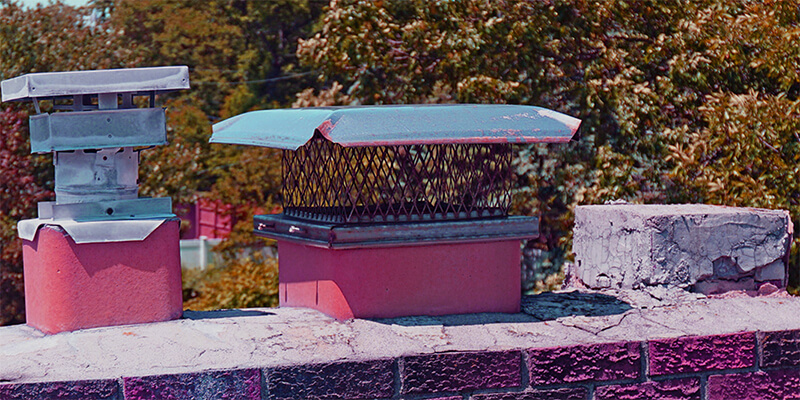Fireplace dampers play a crucial role in the efficiency and safety of your fireplace. Understanding the different types of fireplace dampers can help you choose the best one for your needs. This comprehensive guide will explore the various types of fireplace dampers, their functions, and the benefits they offer.
What is a Fireplace Damper?
A fireplace damper is a mechanism located within the chimney or flue that regulates airflow. It controls the amount of air entering and leaving the fireplace, enhancing its efficiency and safety. Dampers help maintain indoor air quality by preventing smoke and gases from entering your living space.
Types of Fireplace Dampers
1. Throat Dampers
Throat dampers are the most common type and are located at the base of the chimney, just above the firebox. They are typically made of metal and can be opened or closed using a lever or a chain.
Features:
- Easy to operate
- Controls airflow effectively
- Prevents downdrafts
2. Top-Sealing Dampers
Top-sealing dampers, also known as chimney cap dampers, are installed at the top of the chimney. They create an airtight seal when closed, which helps in energy conservation and preventing animal entry.
Features:
- Enhances energy efficiency
- Reduces heat loss
- Keeps out rain, debris, and animals
3. Flue Dampers
Flue dampers are placed within the chimney flue and can be operated by a handle that extends into the fireplace. They are often used in wood stove installations.
Features:
- Provides precise control over airflow
- Suitable for wood stoves and inserts
- Durable and long-lasting
4. Rotary Dampers
Rotary dampers, also known as butterfly dampers, are circular dampers that can be adjusted by rotating a handle. They are often found in wood-burning stove setups.
Features:
- Simple and efficient design
- Easy to adjust airflow
- Suitable for various fireplace types
5. Fireplace Plug Dampers
Fireplace plug dampers are inflatable devices that fit snugly into the chimney. They are used mainly to prevent heat loss when the fireplace is not in use.
Features:
- Easy to install and remove
- Effective at sealing the chimney
- Inexpensive and versatile
Benefits of Fireplace Dampers
1. Improved Energy Efficiency
Fireplace dampers help maintain the indoor temperature by preventing heat loss. This reduces energy consumption and lowers heating costs.
2. Enhanced Safety
By controlling airflow, dampers prevent backdrafts that can bring smoke and harmful gases into your home. This enhances the overall safety of your fireplace.
3. Better Air Quality
Dampers prevent outside air, debris, and animals from entering the chimney, maintaining better indoor air quality.
4. Increased Fireplace Efficiency
Properly functioning dampers ensure that your fireplace operates efficiently, providing better heat output and reducing wood consumption.
How to Choose the Right Fireplace Damper
1. Consider Your Fireplace Type
The type of fireplace you have will determine the best damper for your needs. Wood-burning stoves, gas fireplaces, and traditional fireplaces may require different types of dampers.
2. Assess Your Needs
Determine what you need most from a damper—energy efficiency, safety, ease of use, or a combination of these factors. This will help you choose the right damper type.
3. Professional Installation
Consider having your damper installed by a professional to ensure it fits correctly and operates efficiently. Professional installation can also help identify any other potential issues with your fireplace.
Table: Comparison of Different Types of Fireplace Dampers
| Damper Type | Location | Key Features | Best For |
| Throat Dampers | Base of chimney | Easy to operate, prevents downdrafts | Traditional fireplaces |
| Top-Sealing Dampers | Top of chimney | Enhances energy efficiency, keeps out animals | Energy conservation, all fireplace types |
| Flue Dampers | Within chimney flue | Precise control over airflow | Wood stoves, inserts |
| Rotary Dampers | Fireplace flue | Simple design, easy to adjust | Various fireplace types |
| Fireplace Plug Dampers | Inside chimney | Easy to install, effective seal | Preventing heat loss when not in use |
Maintenance Tips for Fireplace Dampers
1. Regular Inspection
Inspect your damper regularly for any signs of damage or wear. This ensures it operates efficiently and safely.
2. Cleaning
Keep your damper clean to prevent soot and debris buildup. Regular cleaning helps maintain proper airflow and efficiency.
3. Lubrication
If your damper has moving parts, ensure they are properly lubricated to prevent rust and ensure smooth operation.
4. Professional Maintenance
Schedule professional maintenance at least once a year. A professional can check for any issues and ensure your damper and fireplace are in good working condition.
FAQs
1. What is a fireplace damper?
A fireplace damper is a mechanism in the chimney that regulates airflow, preventing smoke and gases from entering your home and improving efficiency.
2. How do top-sealing dampers improve energy efficiency?
Top-sealing dampers create an airtight seal, reducing heat loss and preventing cold air from entering, thus enhancing energy efficiency.
3. Can I install a fireplace damper myself?
While some dampers can be installed DIY, professional installation ensures proper fitting and operation, especially for complex systems.
4. How often should I clean my fireplace damper?
Clean your fireplace damper at least once a year or more frequently if you use your fireplace often to ensure proper airflow and efficiency.
5. What is the difference between a throat damper and a flue damper?
A throat damper is located at the base of the chimney, while a flue damper is placed within the chimney flue. Both regulate airflow but are suited for different setups.
6. Are fireplace plug dampers effective?
Yes, fireplace plug dampers are effective at sealing the chimney and preventing heat loss when the fireplace is not in use.
7. What should I do if my damper is stuck?
If your damper is stuck, try cleaning and lubricating it. If the problem persists, contact us for repair or replacement.
Conclusion
Understanding the different types of fireplace dampers and their benefits can help you make an informed decision for your home. Properly installed and maintained dampers improve energy efficiency, safety, and overall fireplace performance. For expert advice and professional installation in San Antonio, TX, visit Star Chimney Sweep San Antonio. Ensure your fireplace operates safely and efficiently with the right damper and regular maintenance.
By choosing the right fireplace damper and maintaining it properly, you can enjoy a safer, more efficient, and comfortable home. Regular inspection and professional help ensure your damper and fireplace remain in excellent condition.


